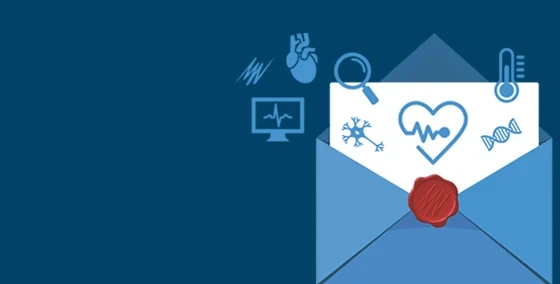How does the heart know whether or not you're exercising? Using optogenetics and Kaha telemetry, Professor Satoshi Koba and his team at Tottori University in Japan have unraveled the mystery.
Exercise seems intuitive. You move your body and your heart rate increases, your temperature rises, you sweat, pant; it all happens naturally. But how does your heart know what your other muscles are doing? As is so often the case, it goes through your brain.
Exercise is a physiologically stressful activity, requiring constant management by the brain to ensure oxygen and energy are available in the higher quantities required in the areas that need them. The parallel activation of movement and the autonomic nervous system is driven by the central command, increasing breathing rate, heart rate, and blood pressure as well as motivating us to perform these energy-intensive movements.

As a graduate student, Professor Satoshi Koba read a textbook on the central command. “What I didn’t understand from that textbook,” Satoshi says, “is where the central command actually was.”
The question of ‘where’ would have to wait for the right technology. Wireless telemetry and optogenetics were the breakthroughs the team needed to start their journey.
“By introducing telemetry and optogenetics into our research programme,” Satoshi says, “we’ve been able to develop a research environment that could be used to elucidate and study the actual state of the brain that supports the function of the central command.”
A thorough breakdown of their findings can be found in Nature Communications.
The team hypothesized that the rostral ventrolateral medulla would play a key role in the central command circuit, as it is typically involved in the blood pressure and pressor modulation of the sympathetic nervous system. Activation of this region should come from a motor-related area, as the blood pressure changes occur in response to increased movement. The circuit they hypothesized required excitation of the rostral ventrolateral medulla by mesencephalic motor neurons, with the circuit concurrently activating the somatomotor and sympathetic nervous systems.

In order to test this hypothesis they needed to isolate the system. Using optogenetics, Satoshi and his team were able to precisely target those mesencephalic motor neurons projecting to the rostral ventrolateral medulla. They observed the rats in their home cages and, using Kaha wireless implantable telemeters, kept track of the rat’s arterial blood pressure.
Related: Introduction to Optogenetics for Neuroscience Research
When the circuit was optogenetically stimulated, not only did arterial pressure increase to levels expected while exercising, but the rats behavior changed; moving or running around as if to match the ‘exercising’ signals their brains were sending.
Activating the circuit, however, is just one side of the puzzle. Next, Satoshi and his team inhibited the circuit during freely-occurring exercise. As expected, the cardiovascular support for the exercising animals dropped, reverting to non-exercising levels. Some of the rats stopped exercising, but this wasn’t consistent across the board. Instead of the inhibition doing anything as complicated as stopping the motivation to exercise, it simply switched the rats cardiovascular activity back to its typical, non-exercising patterns. The rats could keep running, but as far as their brains and their hearts were concerned, they were resting.
This answered another crucial question: whether the mesencephalic motor neuron to rostral ventrolateral medulla circuit is specific to exercise or if it is simply another cardiovascular modulation circuit. No matter the extent of the inhibition, whether during rest or exercise, the rats' cardiovascular system never dropped below basal homeostatic levels. The circuit does modulate the cardiovascular system but only in response to exercise.
Central command dysfunction contributes to known cardiovascular pathologies. Heart failure increases exercise intolerance and the risk of fatal cardiovascular events. Having a clinical target for the treatment of this dysfunction could significantly improve the outcomes for patients already under cardiovascular strain.
“It is already widely accepted that exercise has medical benefits, however the mechanism behind those medical benefits is not well understood,” Satoshi says, “now that we have clarified where the activity occurs during exercise, we believe that this should be a target for future medical care.”

